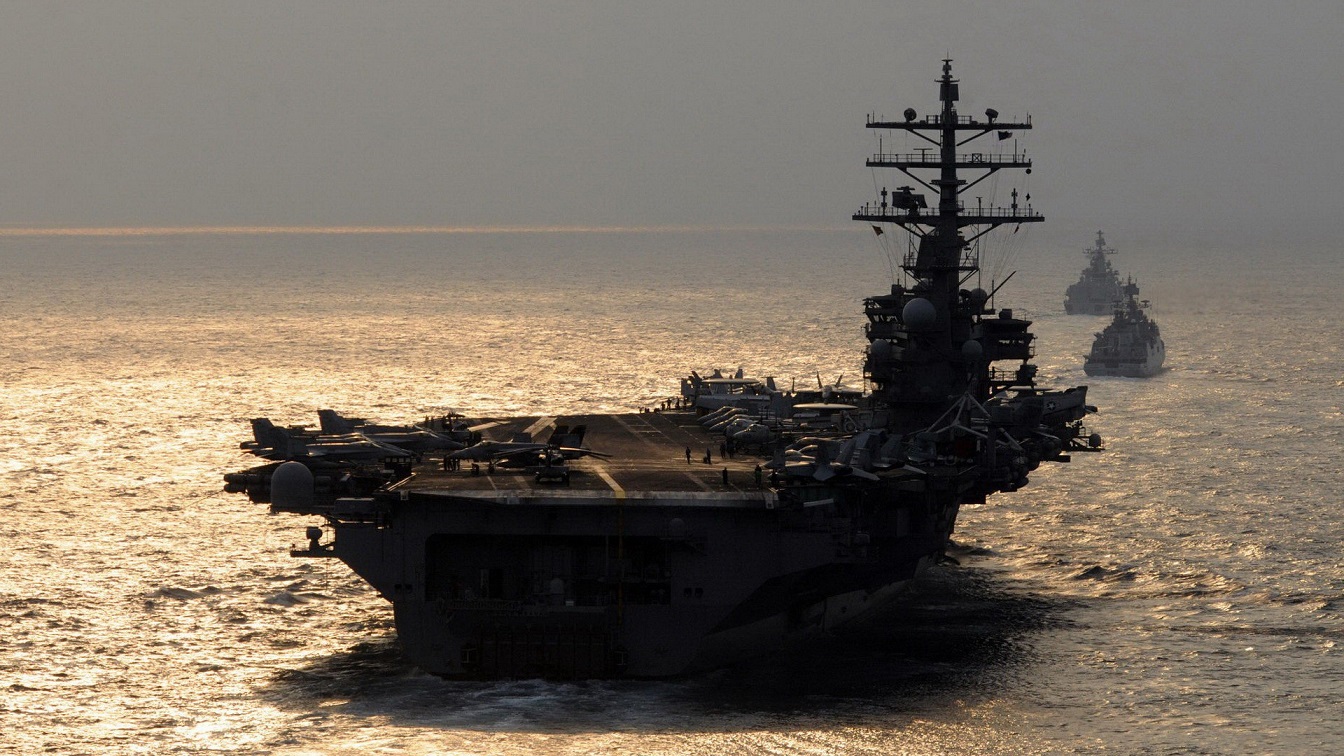Summary and Key Points: China is rapidly expanding its missile capabilities, including anti-ship and hypersonic glide vehicles, to deter or defeat U.S. Navy aircraft carriers in a potential Taiwan conflict. Beijing’s extensive arsenal—featuring missiles like the DF-21D and DF-26 “carrier killers”—could overwhelm enemy defenses and target airbases across the Pacific.
-The PLA Navy is also modernizing its submarine fleet, aiming for regional dominance.
-However, analysts warn that China’s military might may be overstated, relying heavily on propaganda. Still, the U.S. must remain vigilant, as Chinese missile and naval developments represent credible threats to American and allied power projection capabilities in the Indo-Pacific.
The U.S. Navy’s Aircraft Carriers are Under Threat From China
The Chinese military has built up its ballistic missile force and its arsenal of anti-ship missiles for one significant reason. China aims to deny the United States Navy access to the Western Pacific in a war sparked by an invasion of Taiwan.
China test-fired an intercontinental ballistic missile into the Pacific Ocean in September, adding to already heightened tensions in the region where multiple countries have overlapping territorial claims, and both Beijing and Washington seek to project their influence.
Drew Thompson, a former U.S. defense official, said the test launch, which coincides with the United Nations General Assembly meeting in New York, “is a pretty blunt signal” to the international order.
“China is signaling that its forbearance has limits, that it is prepared to use its most powerful weapons to deter adversaries or punish them if needed if deterrence fails,” he said.
China’s Anti-Ship Missile Firepower Aimed at Aircraft Carriers
The Chinese military has a large array of thousands of ballistic missiles designed to overwhelm an enemy’s defenses. Its strategy calls to mass fire of many types of missiles against warships, mainly against US aircraft carriers.
China has five different types of anti-ship missiles. The DF-21D is capable of rapid in-field reloading. In 2013, the missile was tested against a ship target roughly the same size as contemporary US aircraft carriers.
The DF-26 anti-ship ballistic missile variant can rapidly be swapped with conventional and nuclear land-attack warheads. It is capable of nuclear precision strikes, potentially with low-yield optionality. In addition to conventional anti-ship and conventional and nuclear land-attack payloads, it is mobile and can be moved rapidly after firing.
China has described the DF-21 and the DF-26B as “Carrier Killers.”
China’s numerous DF-17s have a hypersonic glide vehicle to evade US and allied radar and ballistic missile defense. “The DF-17 has demonstrated a high degree of accuracy in testing, with one US government official saying a test warhead ‘within meters’ of its intended, stationary target. US defense officials have also said the DF-ZF HGV performed ‘extreme maneuvers’ and ‘evasive actions’ in previous test flights,” a CSIS Missile Threat essay says.
China’s Submarine Fleet is Growing
Currently, the People’s Liberation Army Navy (PLAN) operates about 50 submarines, but the vast majority of these boats are diesel-electric, which limits their range and keeps them closer to the Chinese shore.
However, the PLAN is expected to have 65 submarines in the fleet by 2030. The US is rapidly expanding its anti-ship missile arsenal with anti-ship Tomahawks and LRASMs.
Aircraft Carriers and Airfields Are Prime Targets
The Chinese ballistic missiles will also be targeted against US military runways and taxiways in Japan, Guam, and other Pacific islands in the event of a Taiwan invasion, to impede American airpower.
In a new Stimson Center report, “Cratering Effects: Chinese Missile Threats to US Air Bases in the Indo-Pacific,” the Chinese will attack US airbases and crater the runways and taxiways, basically ceasing air operations for days if not weeks.
The paper’s main point is that to restore its ability to project air power early in a war, the United States will need to outthink—not outspend—the People’s Liberation Army (PLA). The sobering message is that American air bases “can no longer be considered a sanctuary.”
Separating Myth From Reality
One thing to keep in mind is that all of these claims about China’s weapons capabilities come from China itself. As the piece from “War on the Rocks” that was cited earlier stated:
“China has the world’s largest bureaucracy to propagandize its greatest strengths while hiding (or at least dismissing) its greatest weaknesses. America, by contrast, ultimately bares all for all to see. It is an elementary analytical error to confuse the respective great powers’ “dirty laundry” with their “designer clothes.”
Obviously, this doesn’t negate any of the threat levels that the US would face if war did begin between the two superpowers. Complacency is death in war time.
“Even the finest sword plunged into salt water will eventually rust.” — Sun Tzu
About the Author: Steve Balestrieri
Steve Balestrieri is a 19FortyFive National Security Columnist. He served as a US Army Special Forces NCO and Warrant Officer. In addition to writing for 19FortyFive, he covers the NFL for PatsFans.com and is a member of the Pro Football Writers of America (PFWA). His work was regularly featured in many military publications.

